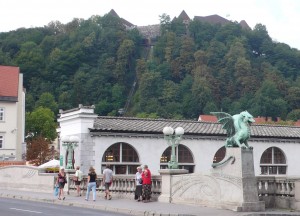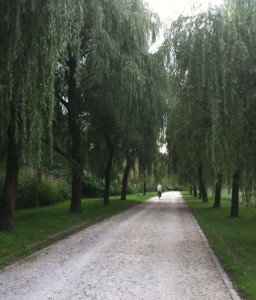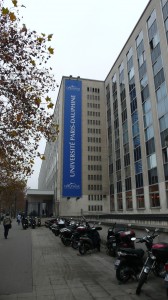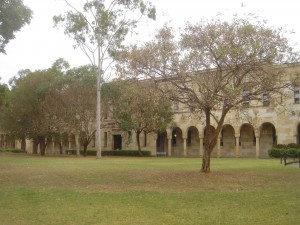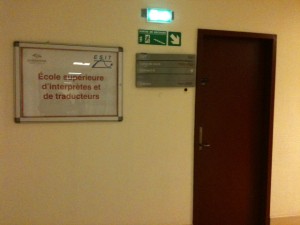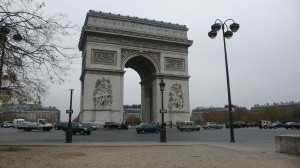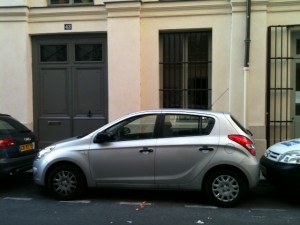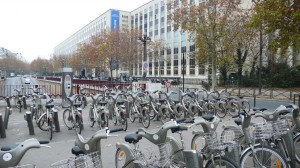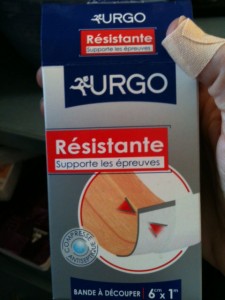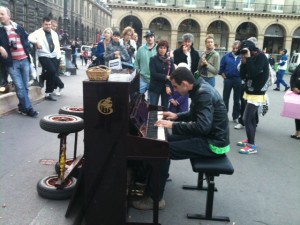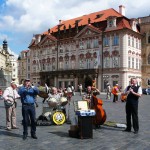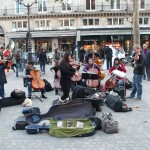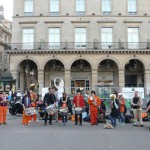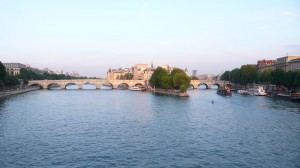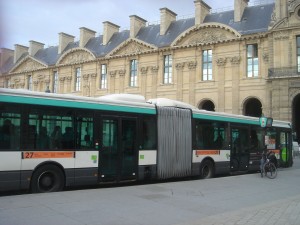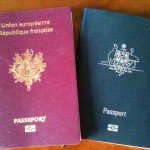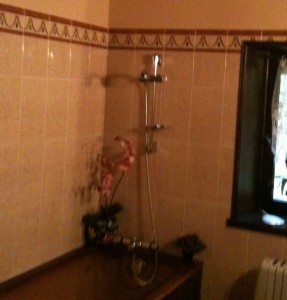 I’m very fussy about my shower. First, I want to be able to attach it to the wall. Now if you think that’s a strange thing to say, it’s because you haven’t been to France. Or you’ve only stayed at my place or in four-star hotels. The first time I ever came across a hand-held shower, I was mystified. Particularly since it was attached to a bath without a curtain or a partition. I can remember taking the kids on beach holidays and having to demonstrate how to have a shower bath without flooding the bathroom at the same time. Not that they ever really managed. I thought that Relationnel, being French, would have the technique. Not so. If we stay in a hotel or a gîte without a curtain, I make sure I have my shower first.
I’m very fussy about my shower. First, I want to be able to attach it to the wall. Now if you think that’s a strange thing to say, it’s because you haven’t been to France. Or you’ve only stayed at my place or in four-star hotels. The first time I ever came across a hand-held shower, I was mystified. Particularly since it was attached to a bath without a curtain or a partition. I can remember taking the kids on beach holidays and having to demonstrate how to have a shower bath without flooding the bathroom at the same time. Not that they ever really managed. I thought that Relationnel, being French, would have the technique. Not so. If we stay in a hotel or a gîte without a curtain, I make sure I have my shower first.
While we’re on the subject of curtains and partitions, that is something else I am fussy about. I can remember being in Greece many long years ago where my accommodation was fairly basic. There was usually a very large shower room but no shower cubicle or curtain, just a shower (attached to the ceiling though). As there was nothing else in the room (except my towel and dry clothes), it didn’t matter all that much. I found a large plastic bag to put everything in and hang on the hook (when there was one) or put on the floor in the opposite corner (when there wasn’t).
In the first house I bought in France, there was a bathroom with a sunken shower tray, a shower attached to the wall, a wash basin, a bidet and a toilet. But no curtain or partition. I finally asked the daughter of the house why the shower was completely open. She said that it was her mother’s way of getting them all to clean the bathroom. Hmm. I immediately bought a curtain rail and a curtain. I’m not keen on those glass cubicles. They may be fine in a hot country but when you’re having your shower in a cooler country, particularly during heating season, they’re perfect while you’re in there. But when you turn off the shower and step out, wow! The cold air massively hits you. Curtains do not have that drawback. They’re also easier to clean. Just buy the nylon ones and put them in the washing machine every couple of weeks.
Next, the water temperature has to be right, which means that anywhere else except North Queensland in summer, I want it to be hot. Not lukewarm or, even worse, what the French call a Scottish shower (douche écossaise) – scalding one minute and freezing the next. Why Scottish, you wouldn’t know and even my French expression reference site doesn’t know the origin. Seems it might refer to some sort of hydrotherapy they used to use there. Not my scene.
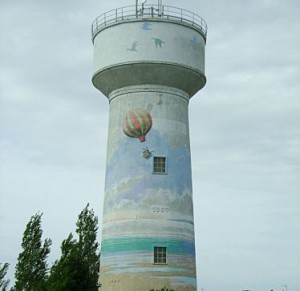 After that I want pressure. This is something you can’t always do anything about. It depends on the water tower. I don’t remember seeing water towers in Australia but they’re all over the place here, sometimes very plain, sometimes just ugly, sometimes decorated with fresques and sometimes used for advertising. There’s one in Le Crotoy in Normandy, for example, that has a beach and hot air balloon painted on it. They pump the water up to the top and then let it go and the pressure acquired on the way down is what provides the pressure at the tap. I think that’s ingenious. It’s called a “château d’eau”, what’s more. If you google “chateau d’eau” images, you’ll find the most amazing collection.
After that I want pressure. This is something you can’t always do anything about. It depends on the water tower. I don’t remember seeing water towers in Australia but they’re all over the place here, sometimes very plain, sometimes just ugly, sometimes decorated with fresques and sometimes used for advertising. There’s one in Le Crotoy in Normandy, for example, that has a beach and hot air balloon painted on it. They pump the water up to the top and then let it go and the pressure acquired on the way down is what provides the pressure at the tap. I think that’s ingenious. It’s called a “château d’eau”, what’s more. If you google “chateau d’eau” images, you’ll find the most amazing collection.
Now it’s no good having hot water and good pressure if the shower head is clogged up. This happens when the water is hard, meaning it has a lot of lime in it. I remember my sister used to unclog the holes with a pin when we used to go the Island on holidays as children. My obsession with showers obviously goes back a long way. But there is a much more effective way. You soak it in ordinary vinegar. We always take a bottle away with us (when we’re travelling by car of course). As soon as we get there, Relationnel cuts off the top of the plastic bottle and sticks the shower head in it for a few hours. You have to be able to unhook the shower of course. It’s miraculous. A perfect, even shower.
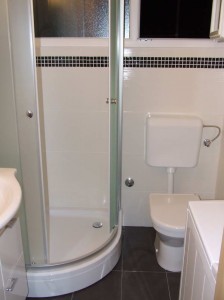 I was very interested to see the showers in Croatia in the flats we rented this summer. They were all the same. A stand-alone cubicle with sliding curved glass doors (it was hot enough not to be blasted with cold air when you got out). The only problem with the bathrooms there is that none of them have towel racks. Or hooks for that matter. It was in Dubrovnik that we finally discovered what we were supposed to do with our wet towels (I still don’t know where you put them while you’re having your shower). One day, we were out and the owner dropped by to take a folding bed out of the flat. When we got back, our towels were nowhere to be seen. Then we found them. He had hung them out the window on the lines overhanging the mediaeval street below. Different countries, different customs.
I was very interested to see the showers in Croatia in the flats we rented this summer. They were all the same. A stand-alone cubicle with sliding curved glass doors (it was hot enough not to be blasted with cold air when you got out). The only problem with the bathrooms there is that none of them have towel racks. Or hooks for that matter. It was in Dubrovnik that we finally discovered what we were supposed to do with our wet towels (I still don’t know where you put them while you’re having your shower). One day, we were out and the owner dropped by to take a folding bed out of the flat. When we got back, our towels were nowhere to be seen. Then we found them. He had hung them out the window on the lines overhanging the mediaeval street below. Different countries, different customs.
What is your experience of showers ?






